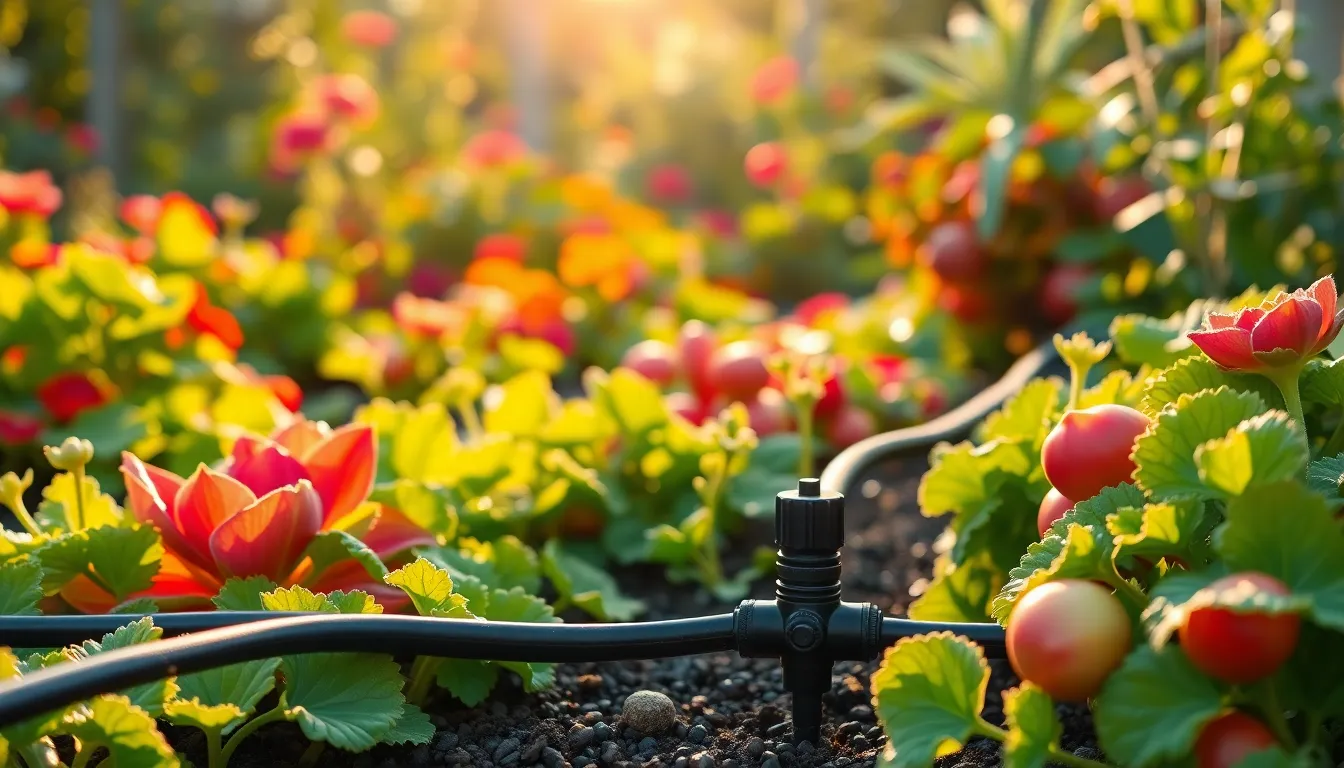The art of gardening is as much about nurturing as it is about efficiency, and a drip irrigation system embodies this balance beautifully. Whether you’re just beginning your gardening journey or have tended to your plants for years, understanding when to install such a system can transform your garden into a thriving oasis. It offers a precise watering method that conserves water and ensures your plants receive the consistent moisture they need to flourish.
For both novice and seasoned gardeners, timing is everything when it comes to installing a drip irrigation system. Knowing the optimal moment to introduce this technology can mean the difference between a garden that merely survives and one that truly thrives. In this article, we will delve into the key signs that indicate the perfect time to implement a drip irrigation system and the seasonal considerations that can maximize its benefits.
Readers will gain insights into the advantages of drip irrigation, including its impact on plant health and water conservation. You’ll learn to identify the ideal conditions in which to set up your system, ensuring your garden reaps the full benefits of this innovative approach. Whether you’re aiming to enhance the productivity of a vegetable patch or maintain the elegance of a flower garden, this guide will equip you with the knowledge to make informed decisions that support sustainable gardening practices.
Identifying Optimal Installation Season
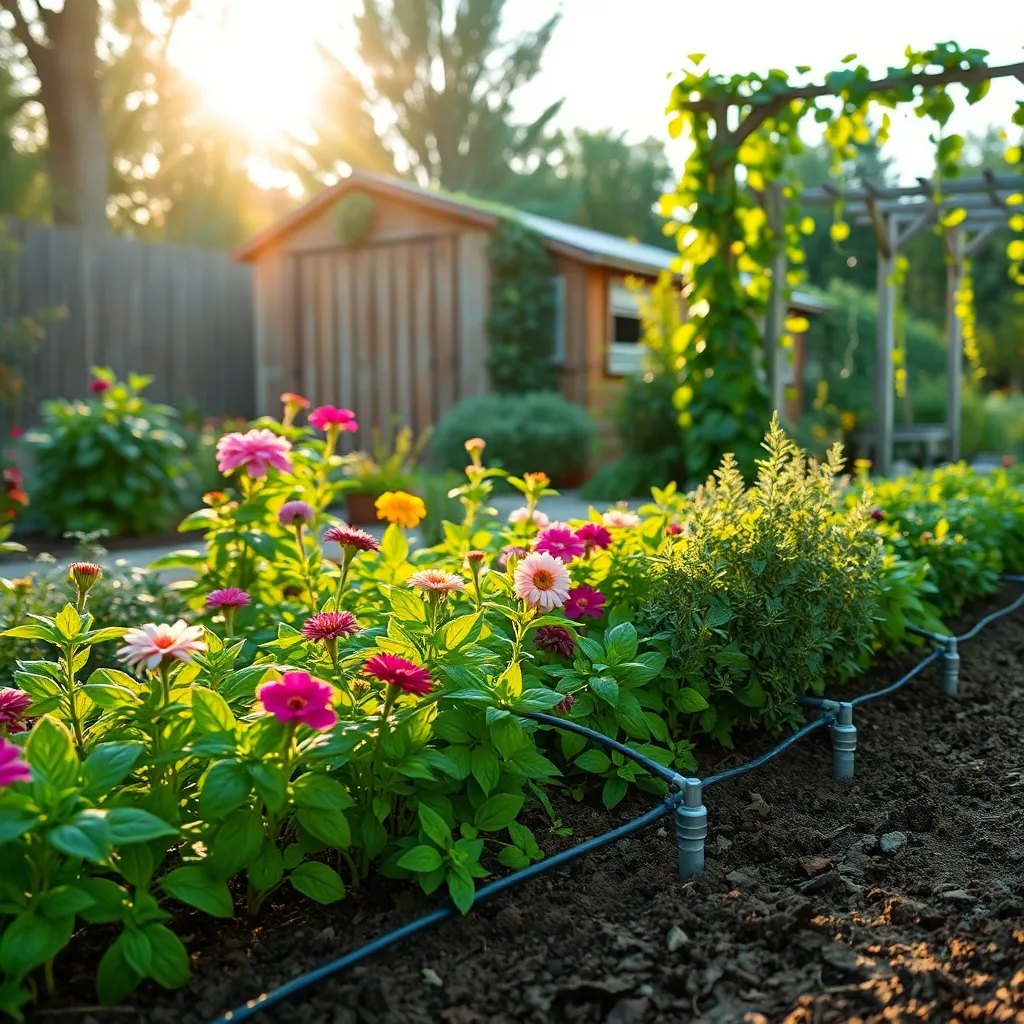
Choosing the right time to install a drip irrigation system can significantly impact its effectiveness. Ideally, installation should occur in the early spring or late autumn when soil is easier to work with and plant growth is minimal.
In spring, the soil has thawed and is moist, making it easier to dig trenches and lay tubing without disturbing emerging plants. Late autumn, after harvesting, also provides an excellent opportunity to install the system without interfering with plant activity.
During these optimal seasons, the weather is often mild, which can make installation a more comfortable task. Additionally, having the system ready before the peak growing season ensures plants benefit from consistent watering right from the start.
For advanced gardeners, consider soil type and the specific needs of your plants when planning installation. Sandy soils might require more frequent watering, so adjusting emitter spacing accordingly can optimize water distribution.
Assessing Garden Watering Needs
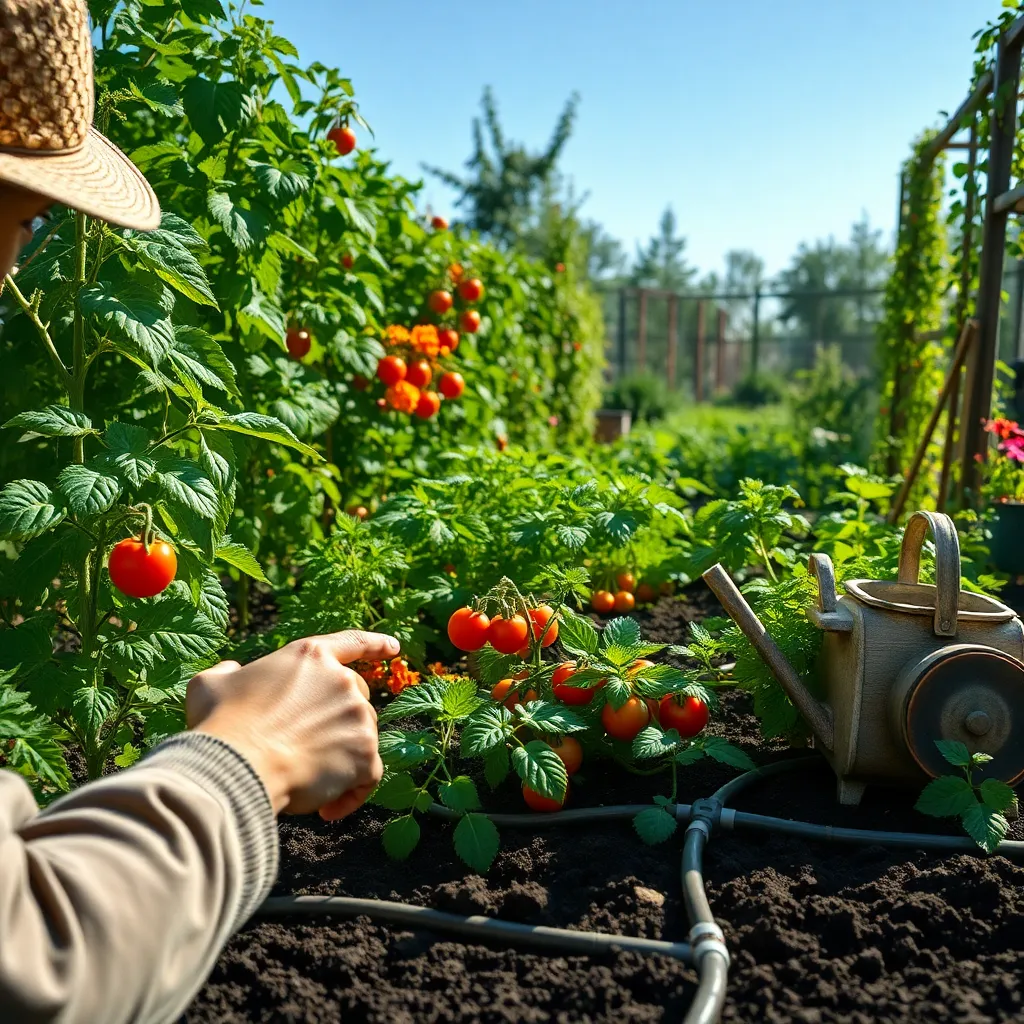
Understanding your garden’s watering needs is crucial for optimal plant health and growth. Start by assessing the soil type, as sandy soils drain quickly and require more frequent watering than clay soils, which retain moisture longer.
Observe how quickly the soil dries out after rainfall or watering. If the soil remains dry just a few centimeters below the surface, it’s a sign your plants may need more frequent irrigation.
Different plants have varying water requirements, so it’s essential to group plants with similar needs together. For instance, drought-tolerant species like lavender and succulents require less water, while vegetables and annuals may need more consistent moisture.
Consider the climate and seasonal variations in your region, as these factors significantly impact watering needs. During hotter months, you may need to increase watering frequency, whereas cooler or rainy seasons often reduce the demand.
For a more advanced approach, invest in a soil moisture meter to accurately gauge the moisture levels at the root zone. This tool can help prevent overwatering, a common mistake that leads to root rot.
To make your garden more water-efficient, apply a layer of mulch around your plants. Mulch helps retain soil moisture, suppress weeds, and regulate soil temperature, reducing the need for frequent watering.
Evaluating Soil and Plant Types
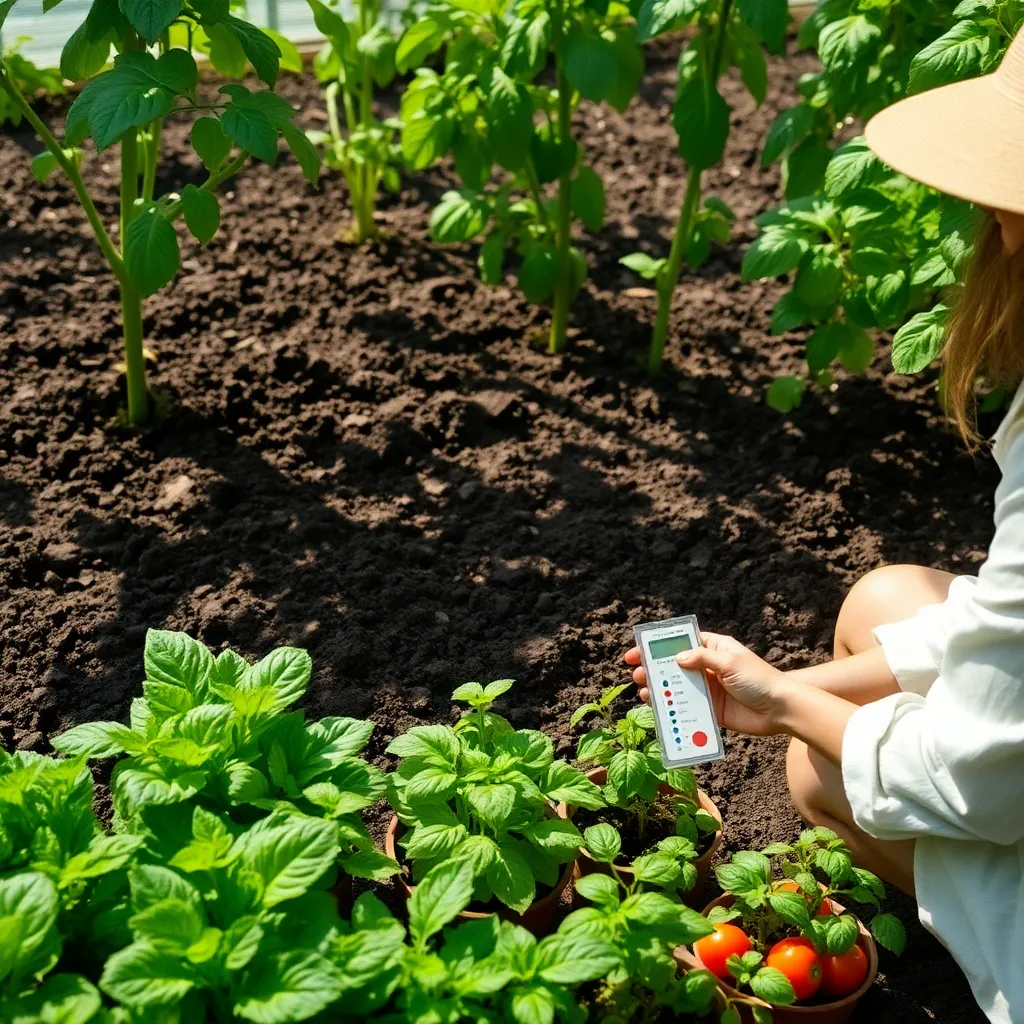
Understanding your soil type is crucial when considering a drip irrigation system for your garden. Different soil types, such as sandy, loamy, or clay, have varying water retention capacities, which affects how often you should water your plants.
To determine your soil type, a simple test involves taking a handful of moist soil and squeezing it. Sandy soil will crumble, loamy soil will hold its shape but break apart easily, and clay soil will form a tight ball.
Clay soils retain water longer, meaning less frequent watering is needed, while sandy soils drain quickly and may require more frequent irrigation. For loamy soils, which are ideal for most plants, a balanced watering schedule is often best.
Knowing the types of plants in your garden is equally important. Different plants have unique water requirements that can affect how you set up your drip irrigation system.
For instance, succulents and drought-tolerant plants thrive with less frequent watering, while vegetables and flowering plants often need more consistent moisture. Grouping plants with similar water needs can optimize your irrigation setup and conserve water.
Advanced gardeners might consider using soil moisture sensors to fine-tune their drip irrigation based on real-time data. This practice ensures your plants receive the exact amount of water they need, preventing both over- and under-watering.
Timing for Maximum Water Efficiency
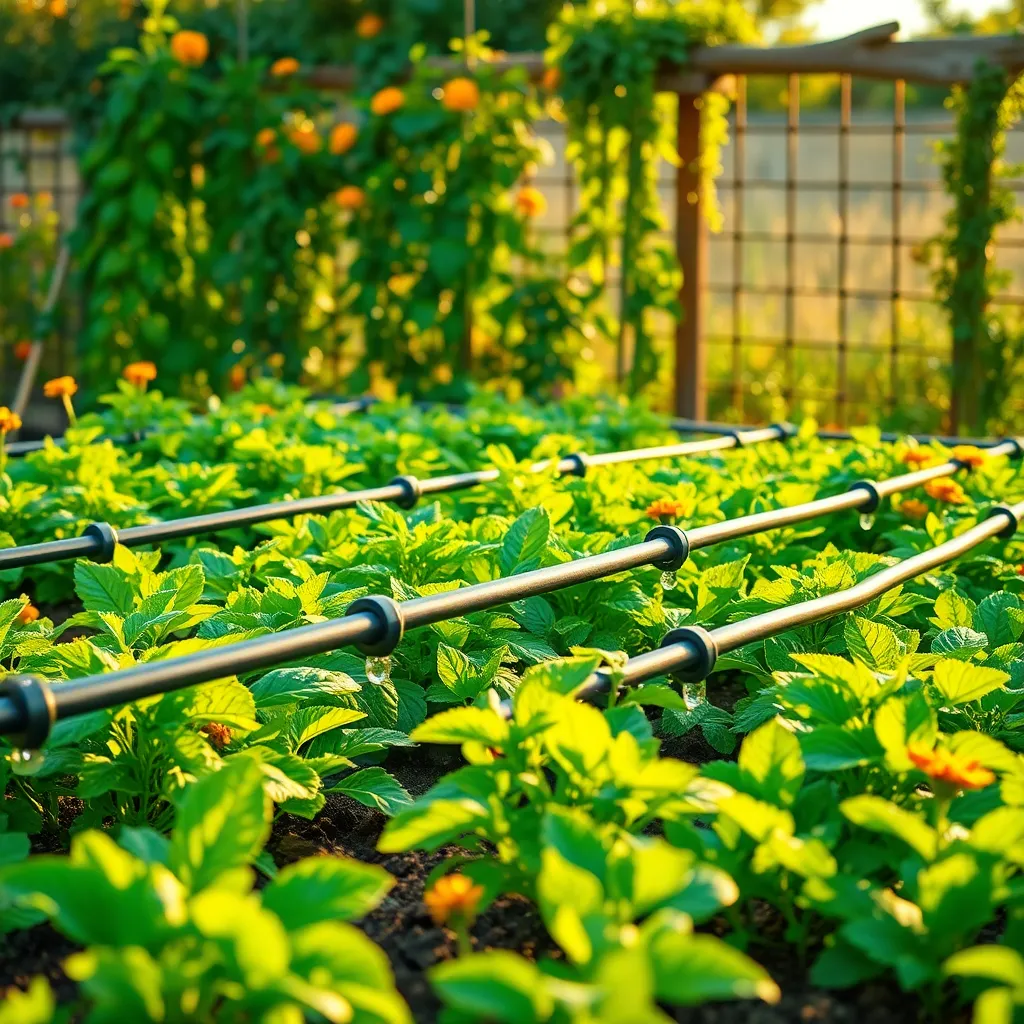
Maximizing water efficiency is crucial in a drip irrigation system, ensuring that plants receive the right amount of moisture without wastage. Timing your watering sessions for early morning or late afternoon can significantly reduce water loss due to evaporation, especially during hotter months.
Choosing the optimal time for watering not only conserves water but also promotes healthier plant growth. Morning watering allows plants to absorb moisture throughout the day, while evening watering can help them recover from the day’s heat stress.
For those new to gardening, setting a timer for your drip system can automate this process, ensuring consistency. Advanced gardeners might consider incorporating a soil moisture sensor, which adjusts watering schedules based on real-time soil moisture levels, enhancing efficiency.
Understanding your soil type is also key to achieving maximum water efficiency. Sandy soils drain quickly, necessitating more frequent watering sessions, while clay soils retain moisture longer and may require less frequent watering.
By tailoring your watering schedule to the specific needs of your garden’s soil and plants, you’ll encourage deeper root growth and healthier plants. Regularly check your system for leaks or clogged emitters to maintain optimal performance and prevent water waste.
Preparing Systems for Seasonal Changes
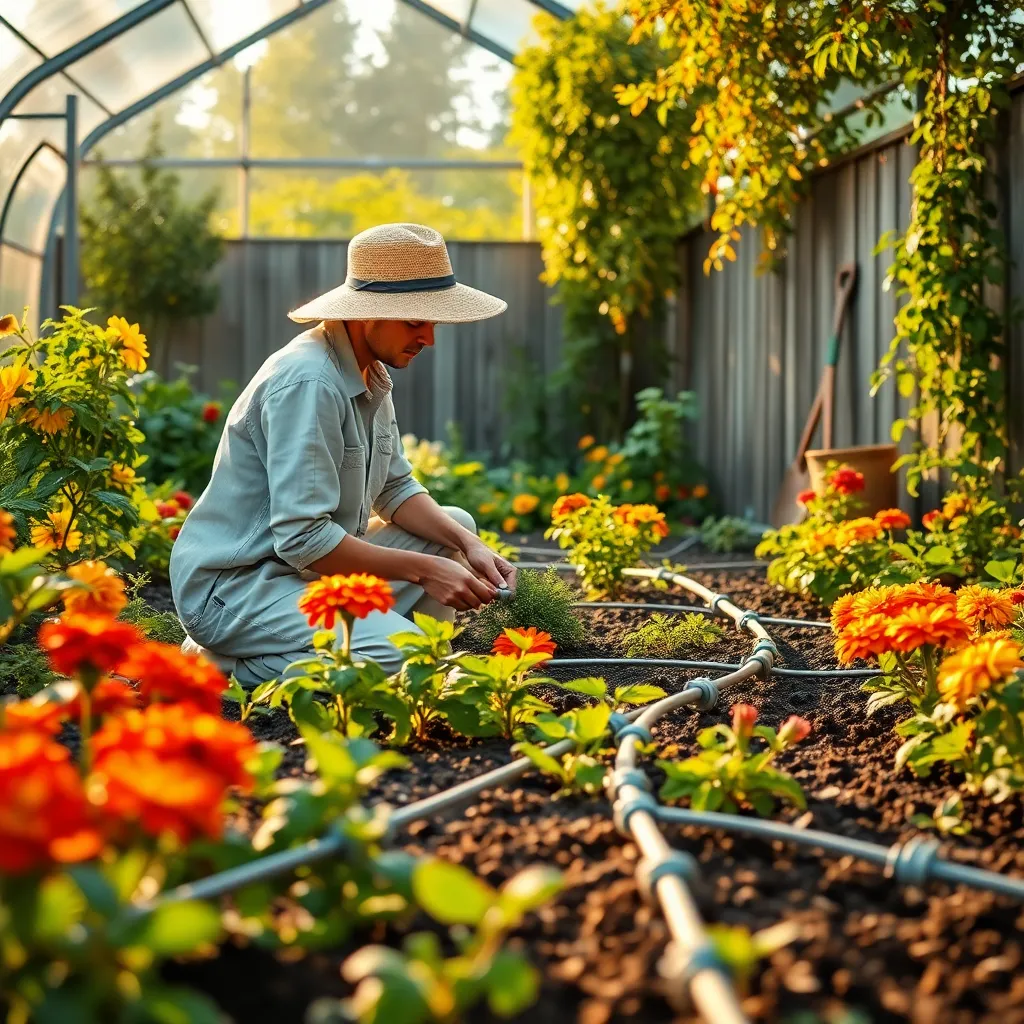
As the seasons change, it’s crucial to adjust your drip irrigation system to meet the evolving needs of your plants. Start by inspecting your system for any leaks or blockages that might have developed over time, as these can significantly impact water delivery efficiency.
Ensure that your irrigation schedule aligns with the seasonal water requirements of your plants. During the cooler months, you may need to reduce watering frequency to prevent overwatering, as the soil retains moisture more effectively in lower temperatures.
In regions with harsh winters, consider draining your system to prevent freezing and potential damage to pipes and emitters. This involves turning off the water supply and opening the end caps to allow any remaining water to escape.
For those in milder climates, adjusting emitter placement can help optimize water distribution as plant growth slows. Moving emitters closer to the root zone ensures that water reaches where it’s needed most, especially for perennials that remain active during cooler months.
Regularly check soil moisture levels to fine-tune your watering schedule further. A simple moisture meter can provide insights, ensuring that your plants receive just the right amount of water without waste.
Conclusion: Growing Success with These Plants
In the journey of nurturing relationships, understanding when to install a drip irrigation system serves as a metaphor for addressing key relationship needs with timely precision. First, we emphasized the importance of consistent communication—like a steady drip—that fosters connection and understanding. Second, patience plays a pivotal role, ensuring that love and trust grow at their own pace. Third, adaptability is crucial, allowing relationships to thrive amid changing circumstances. Fourth, intentional effort in nurturing your bond parallels the careful planning required in setting up an irrigation system. Lastly, recognizing individual needs ensures each partner feels valued and supported.
Empower your relationship today by committing to one small, intentional act of love or communication. Whether it’s a heartfelt conversation or a simple note, take the first step in tending to your relationship garden. Save or bookmark this article as a quick reference to these five foundational concepts, ensuring you have the tools to cultivate a flourishing partnership. With these strategies in hand, you’re well-equipped to navigate the complexities of relationships and enjoy a future filled with growth and harmony. Your relationship can thrive—one thoughtful drop at a time.

